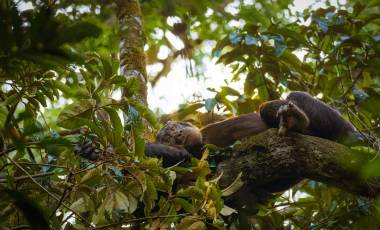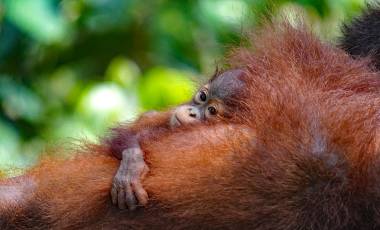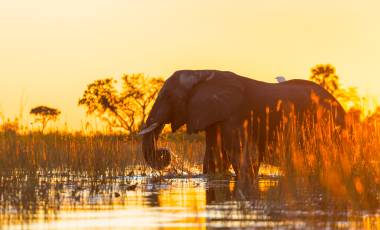Nothing will prepare you for that intoxicating mix of adrenaline and endorphins when you spot a signature species in the wild. In that millisecond, the world seems to pause. Everything is heightened – more cinematic, making you feel like you are the only person in the world privy to these raw moments of magic. This is the effect wildlife encounters have on us. The world is full of incredible wonders, wherever you travel – you just need to know where to look. Luckily, our team of expert guides include wildlife specialists, avid conservationists and leading naturalists know just where to go in search of those unbridled wildlife encounters. So, we’ve collected a couple of our favourite moments to inspire your next Wildlife Adventure.

1. See Green turtles hatching on the shores of Tortuguero in Costa Rica
Many may not know, but Tortuguero National Park is one of the most important Green Turtle nesting sites in the world. And seeing Green turtles nesting and hatchlings being born is one of the most interesting natural phenomena to experience first-hand. Research shows that around 22,500 females nest on the beaches of Tortuguero every year between July and October. And during late November, December and January, the hatchlings begin to arrive. If you’re hoping to see baby turtles, we’d recommend planning your Costa Rica holiday in December and January time.
Sadly, these 300–350-pound giants are classified as an endangered species, and to preserve and protect them, turtle watching should only be carried out when accompanied by fully licensed specialist guide from a local tour operator. On day three of our Discover Costa Rica adventure, you can enjoy a boat tour across the turquoise waterways of Tortuguero National Park in search of Howler monkeys, Scarlet macaws and Caimans. You also get the opportunity to visit the Sea Turtle Museum. We’d really recommend you choosing the optional extra on this day, which allows you to explore the national park’s beaches with turtle trackers, in the hopes of seeing baby turtles hatch on Tortuguero’s white sands.
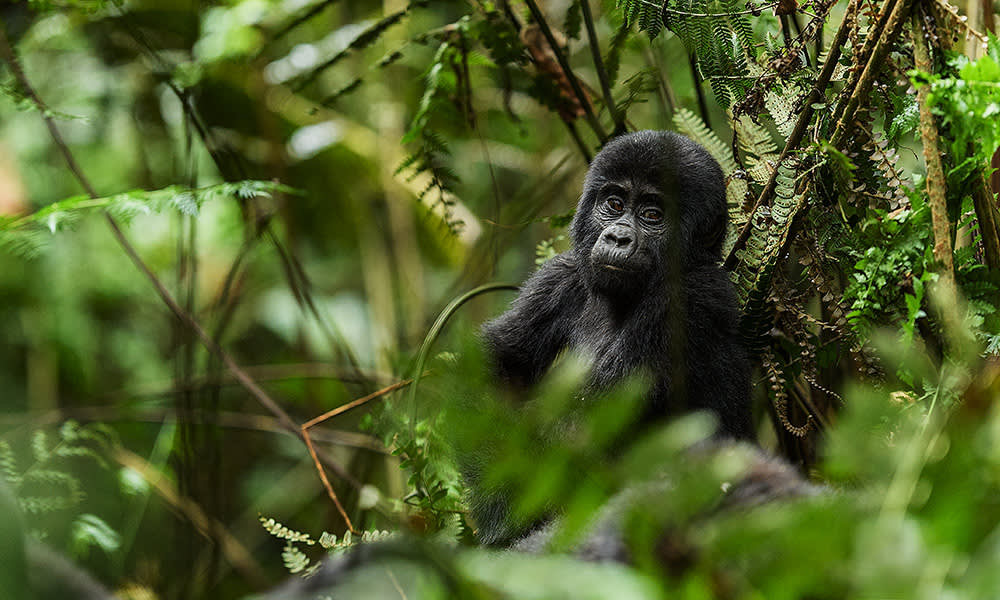
2. Spend a blissful couple of hours with Mountain gorillas in Uganda
Back in 1981, environmentalist research showed that there were only 254 mountain gorillas left on the planet, but thanks to unwavering international conservation efforts, these numbers are slowly starting to rise over the past couple of decades. Today, the Mountain gorillas’ habitats include the Virunga National Park in the Democratic Republic of the Congo, Uganda’s Mgahinga Gorilla National Park, the Virunga Mountain range that encompasses Rwanda’s Volcanoes National Park and the misty peaks in Bwindi Impenetrable Forest National Park in Uganda. The latter is one of the best places to spot these incredible creatures in the wild, as you’ll be where half of the world’s Mountain gorillas live.
The ancient montane and lowland forest in Bwindi Impenetrable Forest National Park, offers the perfect habitat for the endangered Mountain gorilla, so trekking through this area is your best chance of locking eyes with this breathtaking species. Known as the “Place of Darkness, because of its dense treetops, the landscape in the park is difficult to navigate with its river crossing and steep, muddy inclines, which is why it’s best to seek out an expert local guide who knows the area like the back of their hand. On our Chimps & Gorillas of Uganda trip, you can join our wildlife trackers on a fascinating journey through the forest on day six. However, we’d recommend booking early for this once-in-a-lifetime experience, as the number of permits allocated daily is limited.
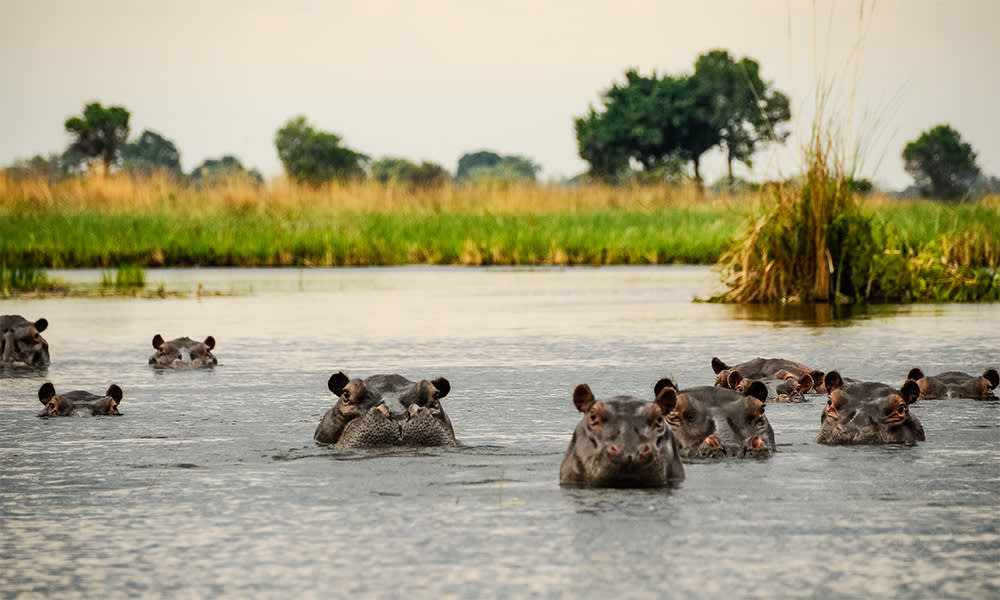
3. Catch a pod of Hippos sunning themselves in the Okavango Delta
In 2014, the Okavango Delta became the 1,000th place to be enlisted as a UNESCO World Heritage Site – and for good reason. You wouldn’t know it, but the Okavango Delta in northern Botswana is made up of over 150,000 islands and sprawling grassy plains which make it a thriving habitat for biodiversity and African wildlife. Many consider the Okavango Delta to be one of the world’s premier wilderness areas as it’s home to a myriad of species including the African Bush elephant, Buffalo, Giraffe, Nile crocodile, Leopard, Cheetah, Black and White Rhinoceros and Hippopotamus.
Although Hippos can be found throughout many reserves across Africa, the Okavango Delta has high concentrations of Hippo pods, making it one of the top places to spot Hippos in the wild. In 2018, studies showed that there were an estimated 12,576 Hippos in the Delta and surrounding areas, representing almost 95% of Botswana’s total Hippo population, so there’s a high chance you’ll see some during our Botswana & Namibia: Dunes and Delta trip, with our experienced Mokoro polers leading the way in traditional dugout canoes on day four. Listen out for a honking laugh, followed by a derisive snort to announce the presence of a pod of Hippos in the Delta’s shallow lagoons. Most Hippos spend their days immersed in the water but if you’re lucky, you may be able to catch them sunning themselves in an almost human-like fashion on the banks of waterholes.
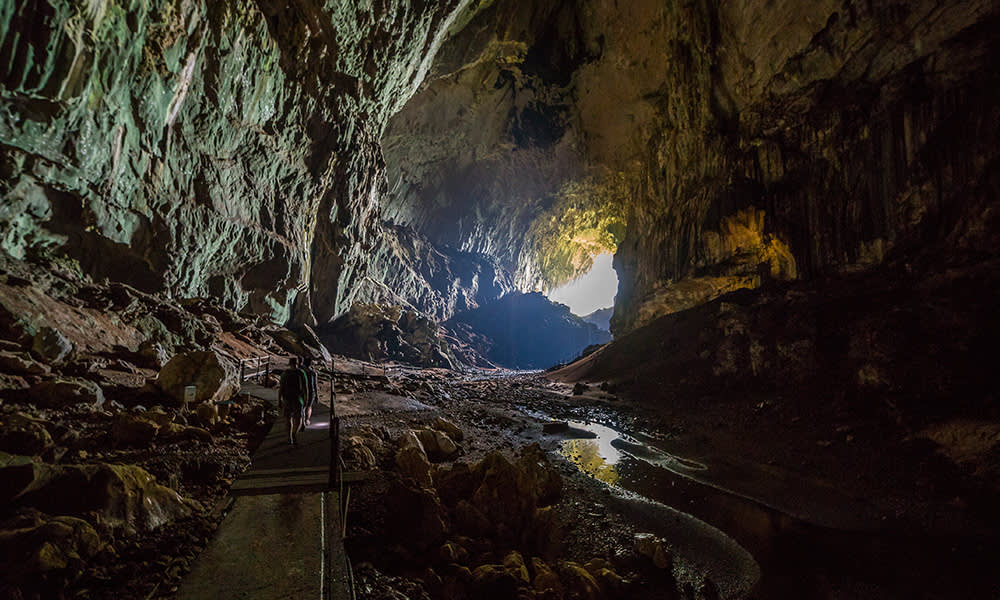
4. Experience a bat exodus from Deer Cave in Borneo
Incredibly, the island of Borneo is home to an estimated 222 mammals, including 44 endemic species, that are not found anywhere else on the planet. Some popular animals to see on your visit are the orangutan, the Malaysian sun bear and the Pygmy elephant, but one of the most memorable and peculiar wildlife encounters you’re likely to experience in Borneo, is to see a bat exodus from the Deer Cave in Gunung Mulu National Park.
At least twelve different species of bats have been recorded to live within Deer Cave, including a huge colony of Wrinkled-lipped bats that are estimated to be between 2.5 and 3.5 million individuals! And each evening around 5:30-6:30 pm, these bats congregate at the Deer Cave entrance in large ring-shaped formations, circling higher and higher up the cliff face before exiting with gusto out towards the dense rainforest in beautiful spiralling ribbons.
On day three of our Borneo Wildlife Discoverer, you’ll head to Gunung Mulu National Park for an incredible sunset walk to the Deer Cave, the largest cave passage in the world. Passing limestone formations, including stalagmites, stalactites and towering columns in the nearby Lang’s Cave, it’s a 3km walk to the Deer Cave, where you’ll trek along boardwalks and wooden steps to the viewing platforms! When you arrive, you’ll have a brilliant view of the bat exodus, which at times, can remain unbroken for 20-30 minutes. Once they leave the cave, the bats can travel up to 100 km before they return in the early morning. This is a phenomenon truly worth seeing in Borneo, just remember to bring a raincoat/poncho, torchlight, sturdy non-slip shoes, and insect repellent.
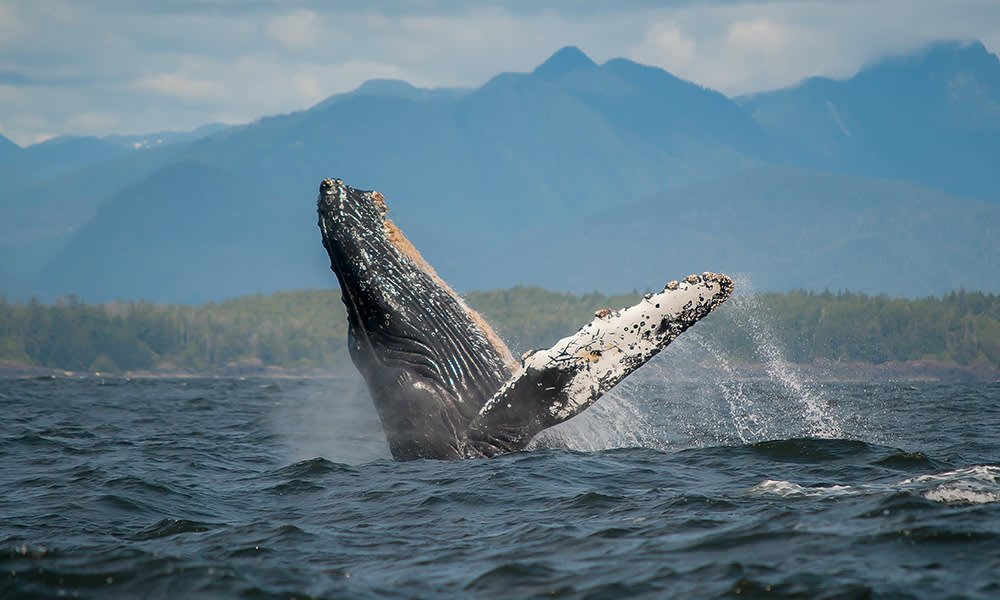
5. Watch whales breach off the coast of Vancouver Island
On our Canadian Wildlife & Vancouver Island adventure, you get to explore the spectacular Jasper and Banff National Park, drive along Icefields Parkway and unwind in Miette Hot Springs, while viewing fascinating wildlife like Bighorn sheep, caribou and bears along the way, if you’re lucky. But one of the most unbridled wildlife experiences that are on everyone’s wish list when visiting Vancouver Island, is watching playful Orcas and Humpback whales breaching.
Experts say that the best time for whale watching around Vancouver Island is between April and October, where Orcas and humpback whale sightings are almost guaranteed during that period. Along the east coast of Vancouver Island, from Victoria to Campbell River and Port Hardy, and on the west coast of the island out of Tofino and Ucluelet, is among the best spots to see a myriad of marine animals too such as porpoises, sea lions, dolphins, otters and more – so be sure to bring your binoculars for the ride on day 11 of our trip! But the highlight for many, undoubtedly, is waiting for that split second when Orcas or Humpback whales emerge from the icy waters!
If unforgettable wildlife encounters are on your agenda, there’s no better time than the present to start planning ahead and take a look at our full range of Wildlife Adventures.


